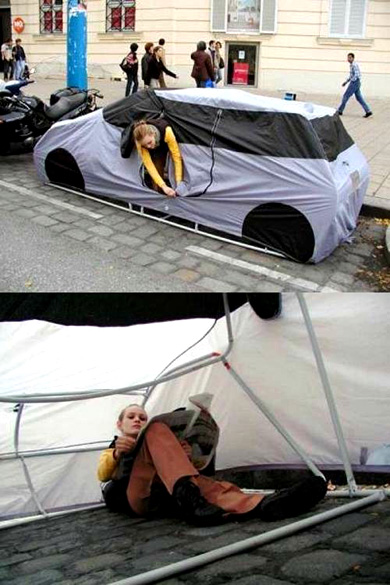
According to Apple, "no software developer kit is required for the iPhone." However, the truth is that the lack of an SDK means that there won't be a killer application for the iPhone. It also means the iPhone's potential as an amazing computing and communication platform will never be realized. And because of this I don't think the iPhone will be as revolutionary as it could be. That's a real heart breaker.
Steve Jobs initially sold the iPhone as the Next Big Thing from Apple, just like the Macintosh was. The Macintosh really broke the mold. While not as groundbreaking, the iPhone is an intelligent and clean implementation of existing things. Really intelligent, really clean, like the Mac. Unlike the original Mac, however, developers won't have full access to its core features. Without them there won't be the equivalent of PageMaker, Photoshop, Word or Premiere in the iPhone, powerful applications taking full advantage of the unique capabilities of the hardware, the operating system and its frameworks.
Those applications spawned two revolutions: desktop publishing (including photo editing) and desktop video. It was the Mac and its third-party apps that brought radical changes that have deeply affected us, not the Mac alone.
On the iPhone, however, developers will be limited to developing Web applications based on AJAX, a set of Internet standards that make software like GMail, Google Maps or FaceBook possible. The iPhone is the real thing, a complete UNIX-to-go with stunning graphic classes, and developers will be limited to do stuff like this.
Mind you, AJAX is great for what it does on the Web today, but is limited. All we know is this, from the press release:
Developers can create Web 2.0 applications which look and behave just like the applications built into iPhone, and which can seamlessly access iPhone's services, including making a phone call, sending an email and displaying a location in Google Maps.
This is nothing new, however. We knew this from the very beginning because iPhone's Safari was already doing it. It's called auto-detection of phone numbers and addresses: you click on a phone or address in your web page and it gets passed by Safari to the operating system, which calls the number or shows the address in the Google Maps app. In other words, they are trying to sell us the same thing we already had when the iPhone was introduced and the same thing we already have in Mac OS X's Safari.
So unless they show something boomtastic in the sessions, this will not change. To see how powerful AJAX applications on the iPhone could be, a million questions will have to be answered this week. Questions like:
- Would I be able to access the iPhone databases from Safari and query them from my AJAX application? Looking at Jobs' stress on security, it doesn't look like this will be possible.
- Would I be able store data locally beyond cookies? Probably the same answer.
- How will these application perform over limited EDGE connections? Will I have to do a painful download for the whole app, instead of just the data?
- How will the connection limit the interactive possibilities?
- How is the access to iPhone's hardware? Would I be able to access iPhone's hardware to connect to an infrared scanner via Bluetooth and create an amazing sales or logistics application? How about Multitouch?
If AJAX is that good and the developers don't need an SDK, why has Apple built a dedicated Mail application or Google Maps software into the iPhone? Why not just reformat the CSS on the Web and open a special view to .mac mail, Gmail or Google Maps made just for iPhone Safari users ?
Maybe because to do the cool stuff that iPhone's Maps do, you need to access all the cool Mac OS X classes that iPhones have.Now, I'm sure that there will be great AJAX applications created for the iPhone, specially at the corporate level, like in the Keynote Demo. But what is important here is that we won't have sexy apps. This is what Apple needs to make the iPhone not just great, but huge. A true revolutionary product. Otherwise, we will keep asking where are we going to find the killer apps that made the Mac what is today; where is the next Delicious Library-equivalent for the iPhone; where are the games. Just think about those, as Apple stresses its relationship with EA and id software. There's a great potential for games in the iPhone, which with multi-touch could be a Nintendo DS 2.0 in the making. As Nintendo fans will tell you, a Flash game (which provides with even better flexibility than AJAX) is not a substitute for a real Wii game. And the next big games never come from the established big developers who may, at the end, be the only ones with access to the secret iPhone SDK at use in Apple.
So no SDK == no access to iPhone's cool frameworks == no revolutionary apps, no real new concepts coming from third-parties, no eye-candy available for anyone but Apple and no possibility for some really crazy games that will fully exploit the graphic and multi-touch power of the iPhone.

iPhone to Support Third-Party Web 2.0 Applications Innovative New Way to Create Applications for iPhone SAN FRANCISCO, June 11 /PRNewswire-FirstCall/ -- WWDC 2007 -- Apple(R)
today announced that its revolutionary iPhone(TM) will run applications
created with Web 2.0 Internet standards when it begins shipping on June 29.
Developers can create Web 2.0 applications which look and behave just like the
applications built into iPhone, and which can seamlessly access iPhone's
services, including making a phone call, sending an email and displaying a
location in Google Maps. Third-party applications created using Web 2.0
standards can extend iPhone's capabilities without compromising its
reliability or security.
"Developers and users alike are going to be very surprised and pleased at
how great these applications look and work on iPhone," said Steve Jobs,
Apple's CEO. "Our innovative approach, using Web 2.0-based standards, lets
developers create amazing new applications while keeping the iPhone secure and
reliable."
Web 2.0-based applications are being embraced by leading developers
because they are far more interactive and responsive than traditional web
applications, and can be easily distributed over the Internet and painlessly
updated by simply changing the code on the developers' own servers. The modern
web standards also provide secure data access and transactions, like those
used with Amazon.com or online banking.
Apple ignited the personal computer revolution in the 1970s with the Apple
II and reinvented the personal computer in the 1980s with the Macintosh.
Today, Apple continues to lead the industry in innovation with its award-
winning computers, OS X operating system and iLife and professional
applications. Apple is also spearheading the digital media revolution with its
iPod portable music and video players and iTunes online store, and will enter
the mobile phone market this year with its revolutionary iPhone.











 It was announced a year ago at Foo camp, and the company gave out about 500 of the first generation devices. Users register the device on the Chumby home page and connect the device to their network via wifi. Once registered, content widgets are added - so the Chumby may include a news widget, flickr widget, etc.
It was announced a year ago at Foo camp, and the company gave out about 500 of the first generation devices. Users register the device on the Chumby home page and connect the device to their network via wifi. Once registered, content widgets are added - so the Chumby may include a news widget, flickr widget, etc.







































